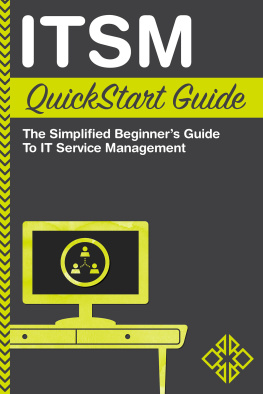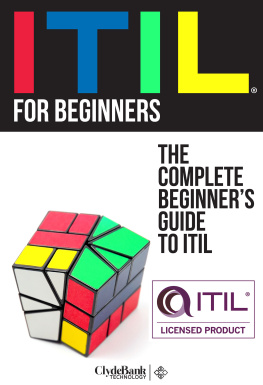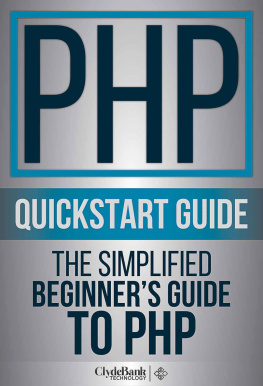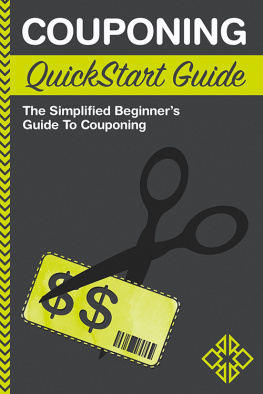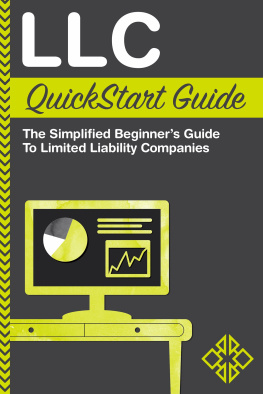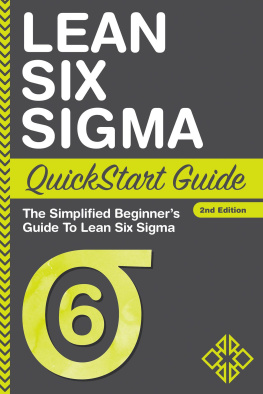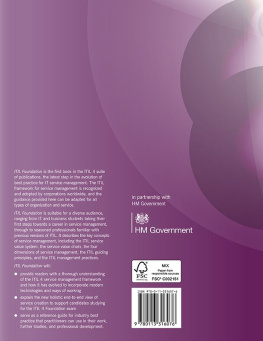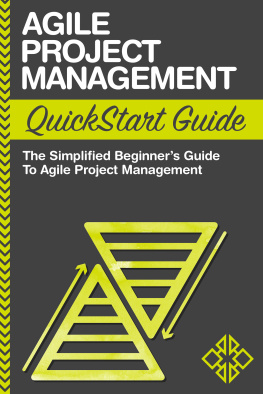Contents
Landmarks
Contents
Terms displayed in bold italic can be found defined in the glossary

BEFORE YOU START READING,
DOWNLOAD YOUR FREE DIGITAL ASSETS!
Visit the URL below to access your free Digital Asset files that are included with the purchase of this book.

DOWNLOAD YOURS HERE:
www.clydebankmedia.com/itsm-assets
Introduction
The ITSM movement is a continual effort to reconcile the complexity of technology with the classic needs of business. To understand the need for ITSM (Information Technology Service Management) you must first understand the digital age in its adolescence.
Some things never change and some things do.
Captain Niobe , The Matrix
Technology has become so multifaceted, so complex, and so insular that it threatens the communication channels between IT and business. In todays digital-centric economy, a businesss ability to effectively and seamlessly integrate its IT department with its service needs makes the difference between success and failure. Businesses will always be based on the idea of delivering a product or service that a customer needs. The essential mechanisms and tools that a business uses to accomplish these ends continually change over time to become more powerful, and potentially more complex and cumbersome. ITSM is the process of ensuring that a businesss capacity to utilize technology is not dwarfed by the capacity and complexity of the technology itself.
A useful ITSM tool provides a wonderful return on investment. However, this is not a one-size-fits-all product. Whats good for that little mom-and-pop company with two dozen employees doesnt necessarily fit the needs of the big corporation around the corner. So how do you find what you require? How can you determine your key ITSM tool integrations? What about a maturity assessment? Do you need to do one of those first? And what kind of other due diligence must you perform (reading product reviews, talking to vendor references, participating in demos) to find whats right for you?
Reading this book is a good start. The chapters that follow provide an in-depth look at ITIL and some of the other fundamental methodologies that have yielded successful results for businesses and their IT departments. This book also explores and analyzes real-life examples of ITSM in action. At a fundamental level, this book educates the reader on the roles of the current major concepts in ITSM. The Glossary of Terms is also a good resource for those seeking a greater command over the emerging language of ITSM methodology.
| 1 | Technology vs. Process
Think about the potential ramifications when IT cant adequately communicate with a business. Here are a few real-world scenarios:
Mrs. Jones, a math and science teacher at a junior high school, started using a web-based teaching utility that allows for fast grading and an easier way to track assignments. The utility also provides an ample supply of practice problems that can be reviewed in the classroom. The practice problems include built-in animations that have proved incredibly helpful in aiding the students to understand the material.
The only problem with this web-based utility is that its costing the school a subscription fee of $2500 a year, and the school principal has only recently been made aware of this steep price tag at an annual budget meeting. Upon further inquiry, the principal discovers that no teachers other than Mrs. Jones are using the utility. She has no choice but to cancel the subscription. This seems like a tremendous disservice to Mrs. Jones, one of the schools best math teachers.
While the above scenario may seem to be simply a communication problemand it isit is also very much a technology problem. The customer (in this case, Mrs. Jones) had an expectation that was not met due to a serious misalignment of expectations and capacity. It is this very same misalignment that has wreaked havoc on so many businesses and institutions throughout the world since the dawn of the digital age. Luckily for Mrs. Jones, she will be able to adapt and find new ways to teach algebra (even though it wont be easy), but in some situations a technological miscue resulting in a service failure can cause irreparable consequences for a business.
Heres a similar scenario to consider. A (fictitious) online book distribution company is planning for (and depends on) a massive spike in business during the holiday season. In anticipation of a larger volume of orders, the company invests in a new order processing system to boost their capacity to broker transactions and ship the products in a timely manner. Due to an ITSM failure, the new order processing system is improperly built and unable to keep up with the holiday volume. The company is forced to pay a huge amount of overtime and hire hundreds of temporary workers to process orders manually. The spike in personnel cost and the resultant loss of expected holiday net profit is staggering.
Consider the same scenario from a different vantage point. The order capacity is met, but the expense of running the system is triple or quadruple what was expected, and the IT solution itself, though effective, proves so costly that the company suffers an equally sizeable hit to its bottom line.
Focusing on Process Rather than Technology
Youll hear this notion a lot: ITSM involves moving from a technology focus to a process focus. Process focus develops a language that can be shared between IT professionals, business managers, and financial managers. This language allows all parties to establish and adhere to clear expectations, progress reports, and financial strategizing. Process focus ultimately tames technology to serve the needs of business and delivers a quality result for the customer.
To understand ITSM as the natural evolution and outcome of years of problematic IT practices, we need to take a closer look at some of the IT practices that were most prevalent in the old days (19962005). The go-to IT management practices were Network Management and IT Systems Management , and each focused heavily on a collection of critical technologies that had to be learned through lengthy certification processes and were essentially Greek to anyone outside of the IT bubble.
The standard Network Management curriculum was a system of classifications, terminology, and processes that centered on a multitude of technologies. All of the ways in which IT technology was accessed under standard Network Management were extremely esoteric. Technicians used SNMP (Simple Network Management Protocol), custom XML, Windows Management Instrumentation (WMI) and a limited number of other methods. In an attempt to integrate IT with the larger business model, various schemas were in place, such as the Structure of Management Information, WBEM (Web Based Enterprise Management), the Common Information Model, and several others. These schemas posed some problems:
- They were essentially developed for techies by techies to serve no discernible nontechnical end. It was technological organization for its own sake, without any mandate to interact with or even understand the classic, established, service-oriented needs of business.
Because they failed to organize around service processes, they ended up becoming highly differentiated across multiple industries. Internet service providers, for instance, focused on the development of an IT regulation system called deep packet inspection to attend to their common service problems, such as delays and bottlenecks in their networks. Medical tech companies were much more inclined to develop systems that didnt focus so heavily on the expedient transmission of data, but instead on safeguarding the data that was protected by the law (for example, HIPAA).

